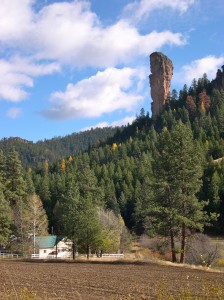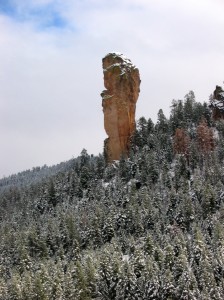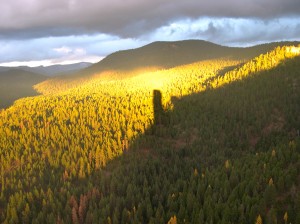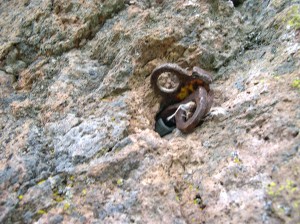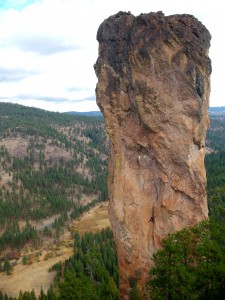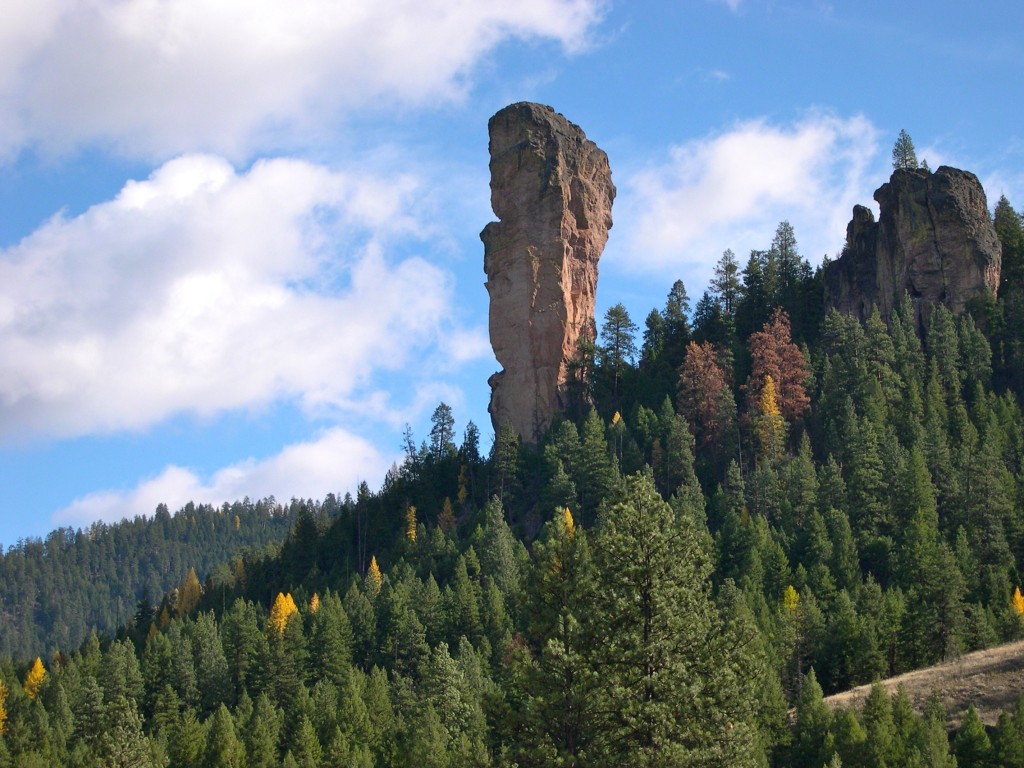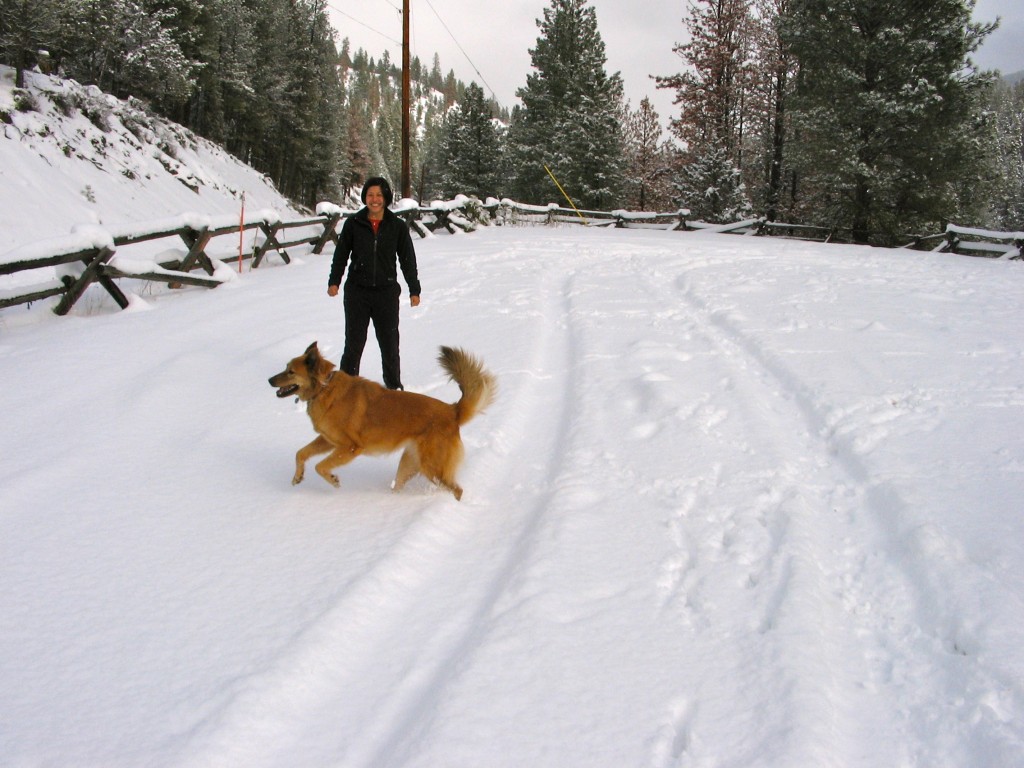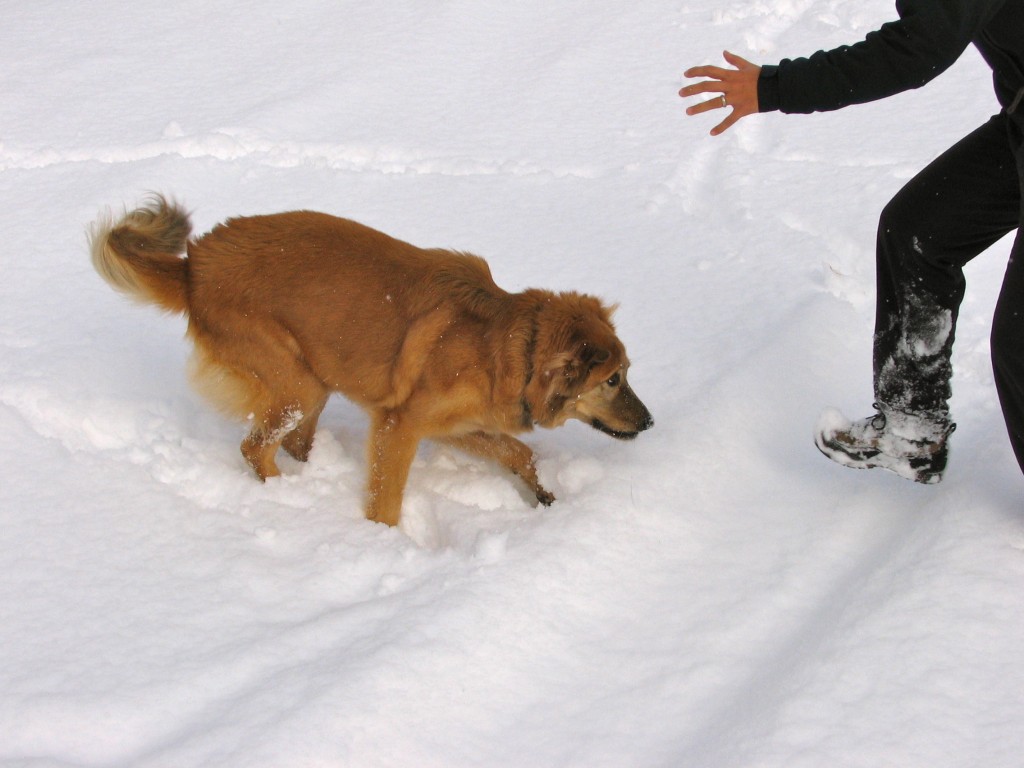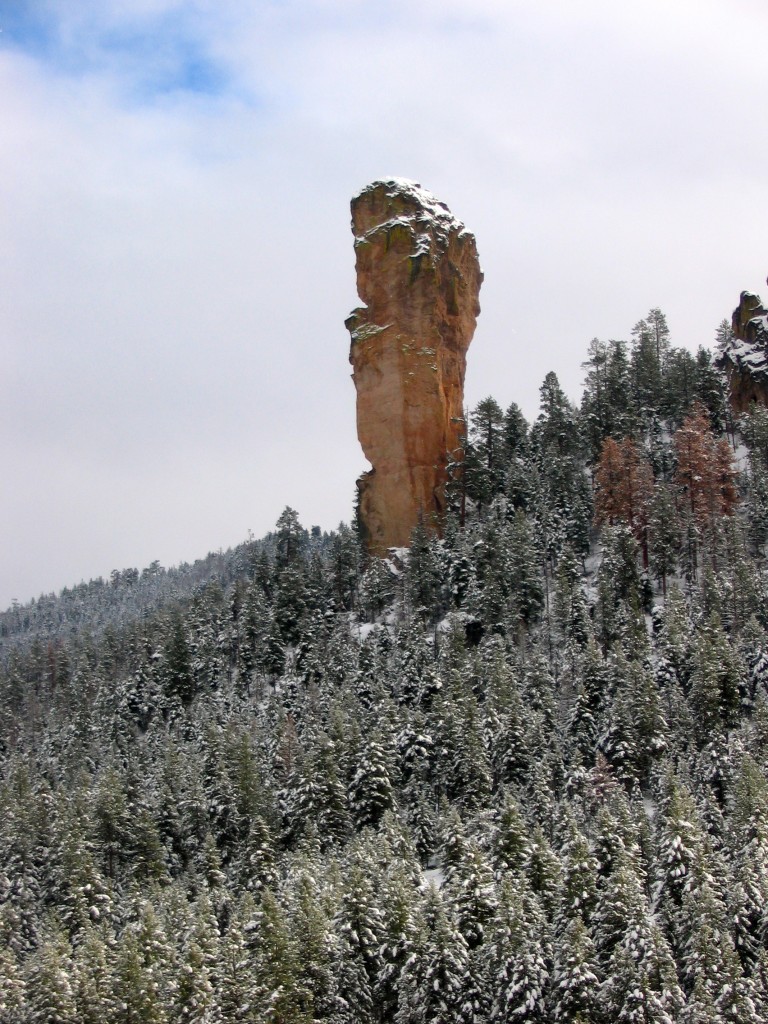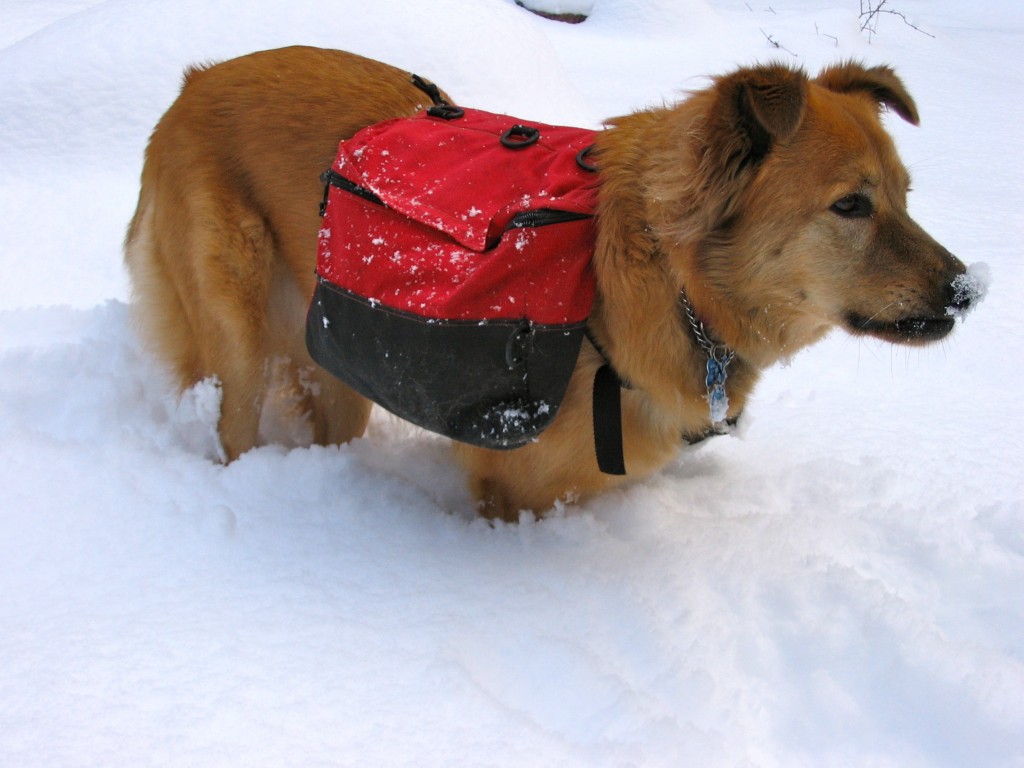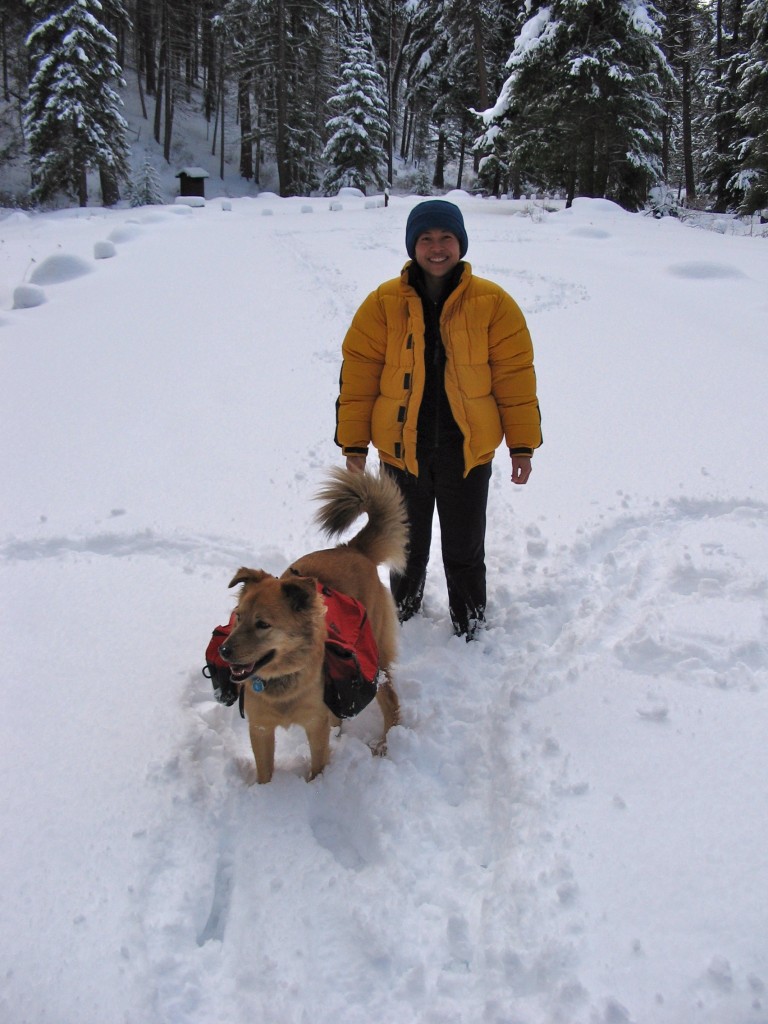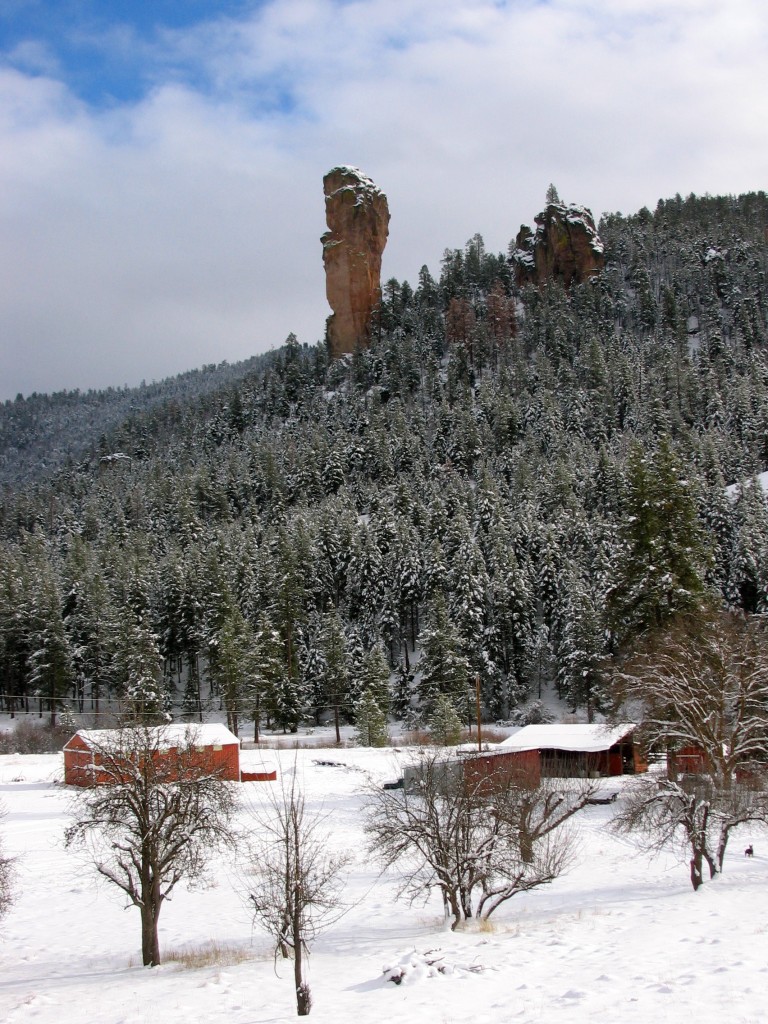Go back to Oregon page.
Bit Of An Overview
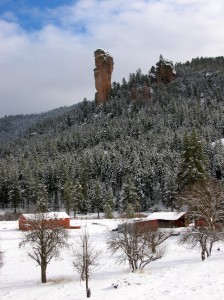
Steins Pillar from SW (Jan. 2005).
Steins Pillar is a 350-foot natural skyscraper that rises out of the gentle slopes of the Ochoco mountains in central Oregon just east of the town of Prineville. With its overhanging bulbous summit, it towers impressively over the Mill Creek Valley just outside the Mill Creek Wilderness. The farm structures lying at its base provide the onlookers with the correct sense of scale. The pillar is composed of rhyolite ash produced by eruptions from the Cascades that settled in an inland sea and compacted to stone – a natural process that apparently also spawned Monkey Face.
According the the USFS plaque at the overlook, The Pillar was named after the 1860’s area explorer, Major Enoch Steen. The name was commonly misspelled and the incorrect version eventually became official.
Our Go’s At It
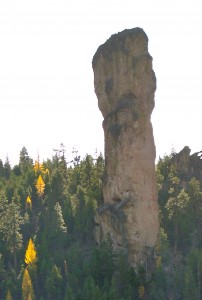
Steins Pillar from SE. Northeast Face route is visible.
Established Routes (2005)
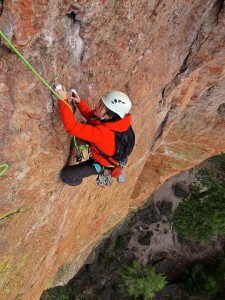
Southwest Face route.
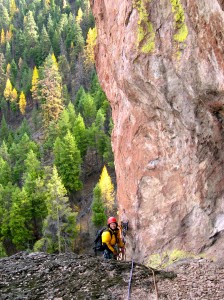
Northeast Face route.
Northeast Face, III 5.11a or III 5.7 A3. First ascent (including first ascent of The Pillar) made by F. Richardson, G. Richardson, D. Baars (2nd ascent of St. Peters Dome), L. Rice, R. Shay in July of 1950. First free ascent made by J. Thomas, B. Ramsey, and A. Watts in July 1979. Note that the progressive accumulation of “good” fixed gear on this route has probably dropped the current aid rating to about III 5.9 A2 or perhaps even III 5.8 A2. Don Baars had since corrected my list of the FA party that had actually made the summit.
.
Quoting Don:
Made first ascent of Steins Pillar in 1950. Acually, only myself and Floyd Richardson summitted, the others helped with drilling and belays as high as the high ledge. Richardson was a bird colonel in the Air Force and was killed in action in Vietnam. This is a nice picture story of your climb! Thanks! Don Baars.
Don also mentioned:
I have a copy of our 1st ascent register note from 1950 on Steins Pillar. Scribbled on it is the 2nd ascent by Fred Becky, Eric Bjornstad, Steve Marts, and Dave Beckstead, dated Aug-26-63. That’s 13 years after the 1st ascent. So I guess Becky,et al. did beat Layton Kor to the second ascent, if he climbed it at all. Becky, Bjornstad, Dan Davis and Dick Springgate climbed it again in 1964 – the 3rd ascent? They made it in 12 hours.
.
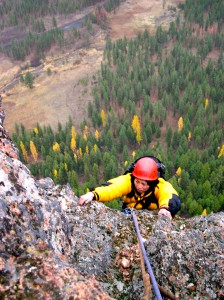
Northeast Face.
Variation, IV 5.7 A4. This is a variation to the above Northeast Face route where the grade IV refers to the overall push to the summit. This variation substitutes the first two pitches (5.5 and easy aid pitch) of Northeast Face route with 2 pitches of hard A4 choss nailing. First ascent made by K. Schmitz and D. Caldwell in July 1965.
Southwest Face a.k.a. West Face, III 5.10d or III 5.6 A3. First ascent of this route made by J. Nieland, E. Dod in October 1967. First free ascent made by B McGown and J. Thomas in July 1977.
Information taken from Oregon Rock A Climber’s Guide by Jeff Thomas and A Climbing Guide To Oregon by Nicholas A. Dodge as well as email exchanges with Don Baars (RIP).
Published Material
Only the first book is currently in-print. All others require a bit of searching around for.
.
.
Stein’s Pillar is a rhyolite monolith of amazing shape. Because it overhangs profusely on all sides, a member of the first climbing party described it as ‘the most terrifying sight I have ever seen.’ Its height above the lightly-forested hillside in the Ochoco National Forest near Prineville, Oregon, ranges from 375 to 500 ft. The first ascent was made by Donald L. Baars, Floyd Richardson, and Glenn Richardson in July 1950 after various attempts spread out over several years. The successful effort began on July 11; one member had to forgo the summit due to sore stomach muscles derived from the overhanging drilling. An early unknown party, about 1920, left a rope ladder hanging about 50ft above the first major ledge on the east face. The next attempt was by Baars, Leonard Rice, and Russell Johnson, who reached a position above the ‘cave.’ A new 4-day effort almost reached the last ledge, and almost ended in disaster when a rope wore through. It should be noted that on the original ascent 110 holes (5/8″) were drilled, but most of the bolts were removed. Some of these holes are now unnecessary, and some bolts have been replaced. On the second ascent by Fred Beckey, Steve Marts, Dave Beckstead, and Eric Bjornstad, it was found that 5/8″ expansion bolts and stubby 3/4″ angle pitons fitted the holes best. Enlarging of holes has now required wider pitons to jam and stick; the best selection is angles 1″ and larger, Leepers, wedges, and thick horizontals.
.
Thanks to Paul Klenke for providing this information. Additionally, Beckey provides a topo for the route. The topo is a bit out of date but route-finding is a non-issue on the Northeast Face route. A few details that Beckey has differently to what we did/saw. Anchor bolts for top of P2 are at far right side of “Second Ledge”. P3 starts up a shallow dihedral at far left edge of second ledge with a couple of trad placements followed by fixed gear line. First fixed piece at start of P5 is way high and you either need to free climb up to it or stick clip it. Also, the ratings given by Beckey probably no longer hold. There are most likely no A3 sections on the route any more but on the other hand given the amount of bad fixed gear (body weight only), most pitches are more serious than A1 (A1+ to A2 I’d guess?).
Photos
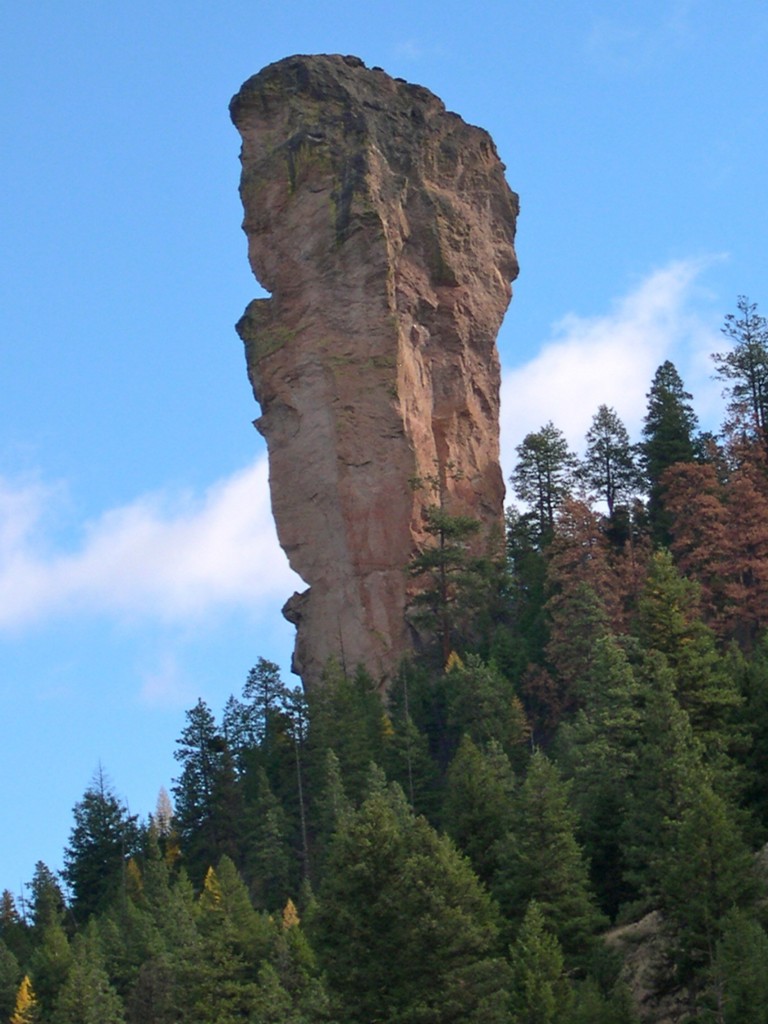
Close up of Steins Pillar’s southwest face, home of the route (5.10+ reportedly) by the same name (Oct. 31, 2004).
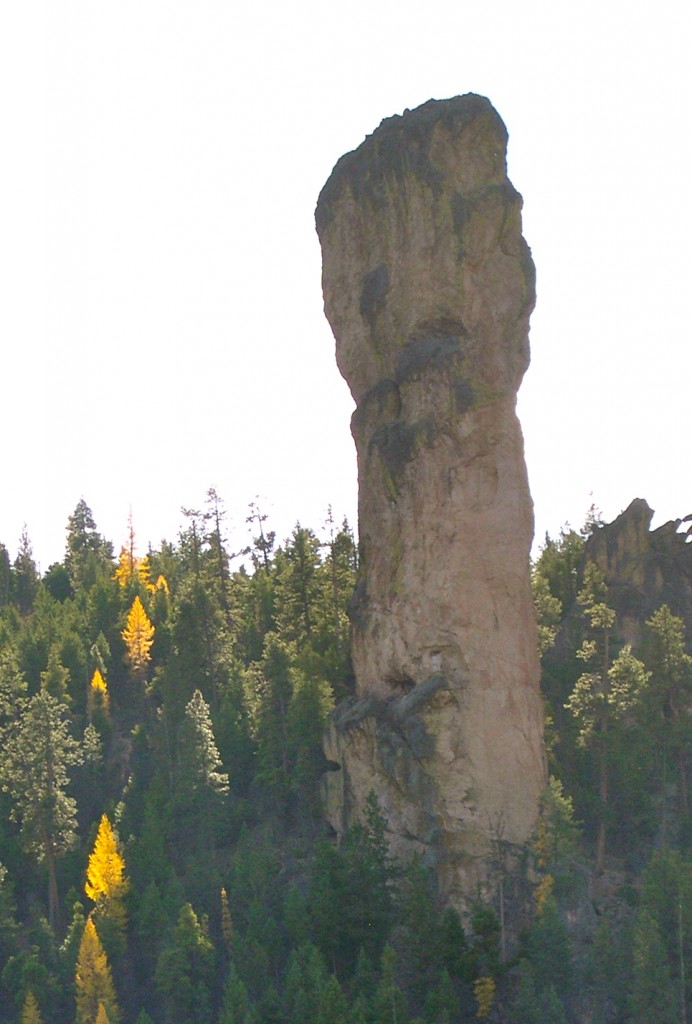
View of Steins Pillar from the overlook (from southeast). Much of the Northeast Face route is visible.
Go back to Oregon page.
